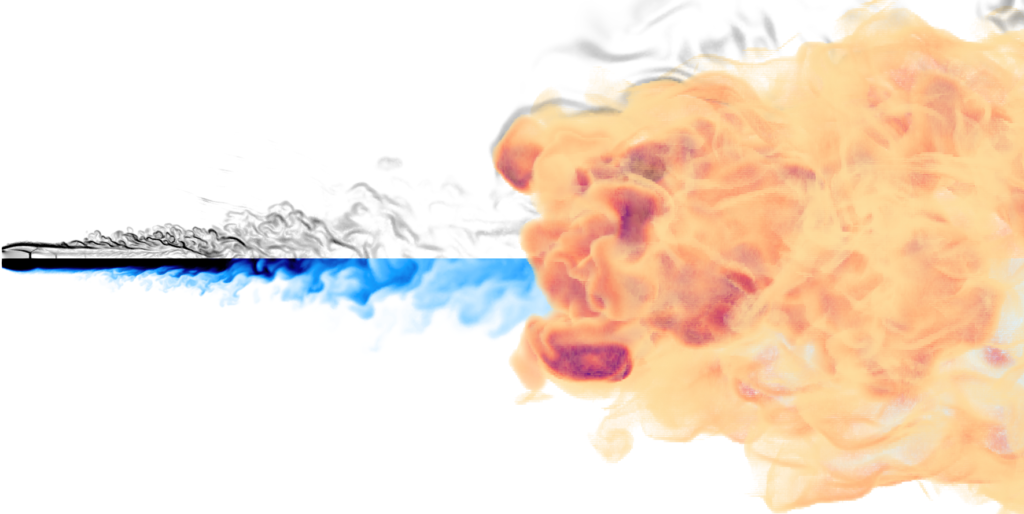🎓Félicia GARNIER thesis defense
Thursday 24 April 2025 at 14h00
JCA Room, Cerfacs, Toulouse
Investigation of hydrogen jet flames structure and stabilization using Large-Eddy Simulation
ED MEGEP- [Subject to defense authorization]
https://youtube.com/live/YF3256fsO9o?feature=share

Ensuring safety is a key element to expand hydrogen use beyond its current industrial applications. Hydrogen leaks or venting typically involve releases from high pressure environments, producing high-speed, turbulent jets that are easily ignitable and can cause significant damage to their surroundings. Stabilized jet flames resulting from a release of pressurized hydrogen are central to various safety scenarios, and have become increasingly investigated. Still, a deeper understanding of their structure and stabilization is required to predict and prevent them, which is the focus of the present dissertation. Two hydrogen jet flame configurations are studied using Large-Eddy Simulation (LES): a subsonic attached flame and a supersonic underexpanded lifted flame. LES results are thoroughly assessed against experimental data, and the flame structure and stabilization are analyzed. The subsonic flame is found to either remain anchored or slightly lifted above the nozzle. In the anchored regime, the analysis of the flame structure reveals a very good consistency with reference laminar flamelets, with a limited degree of transient effects and extinction events. In the lifted case, the jet flame is stabilized by a highly stretched triple flame, consistently with existing mechanisms of lifted flame stabilization. The supersonic jet flame stabilizes in a partially mixed region, forming a stratified premixed front at its base. The analysis of the flame base indicates that the stabilization is controlled by lean premixed burning at the jet outer edge. This finding underscores the importance of accurately modeling lean hydrogen flame premixed propagation, subject to thermo-diffusive effects. A model improvement in this direction could improve lift-off height prediction. The simulations also emphasize the bottleneck related to the computational cost required to perform high fidelity simulations of hydrogen jet flames, with flame length of the order of a meter. This highlights the need for future research into multi-scale and low-order methods.
Jury
| Mme Pascale DOMINGO | CNRS – CORIA | Reviewer |
| M. Pierre BOIVIN | CNRS – M2P2 | Reviewer |
| M. Andrea GRUBER | SINTEF | Examiner |
| M. Vladimir MOLKOV | Ulster University | Examiner |
| M. Thierry POINSOT | CERFACS, CNRS – IMFT | PhD supervisor |
| M. Lucien GALLEN | AIRBUS | Invited member |
| M. Thomas JARAVEL | CERFACS | Co-supervisor – Invited member |
No content defined in the sidebar.

